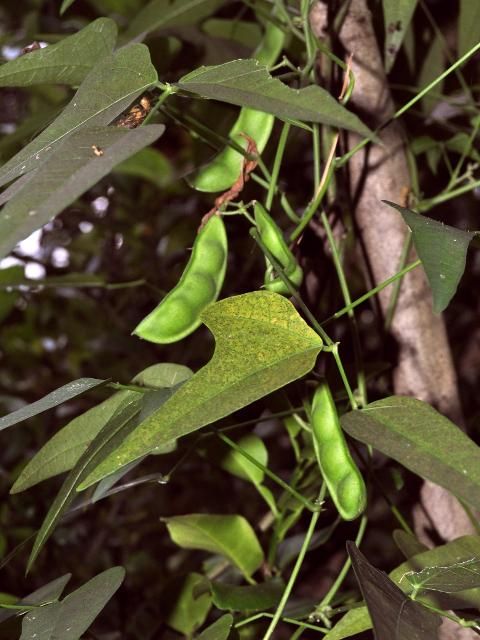Beans, Willow-Leaf Lima—Phaseolus lunatus forma salicis Van Esel.1
The willow-leaf lima bean is a form of pole butter bean (P. lunatus L.) that keeps surfacing from time to time in home gardens around the state of Florida. In most respects, it is like the standard pole lima bean, except that it has very narrow lanceolate leaflets the shape of a willow or peach leaf.
Lima beans are of American origin, and evidence indicates that they have been grown in or near the tropics since prehistoric times. Guatemala is considered to be the original home of the lima bean, although its naming came from Lima, Peru, where it is thought to have originated. American settlers were growing baby limas in about 1700.

Credit: Credits: James M. Stephens
Description
Strains of lima beans found in tropical America, where it is indigenous, always had the broader, ovate leaf pattern and the indeterminate (vine) form of growth. The alternative characteristics—lanceolate leaflets and determinate (bush) growth habit—are derived characteristics and are restricted to cultivated types. Thus, it appears that the willow-leaf lanceolate shape was derived from a rare mutation. Cultivated varieties of this leaf shape are very few, although the shape has been transferred to most all types.
This species exhibits the seldom encountered genetic characteristic of narrow leaflets. The smooth, white, or otherwise colored seeds are edible. The plants should be grown in the garden just like the more familiar types of pole lima beans.


